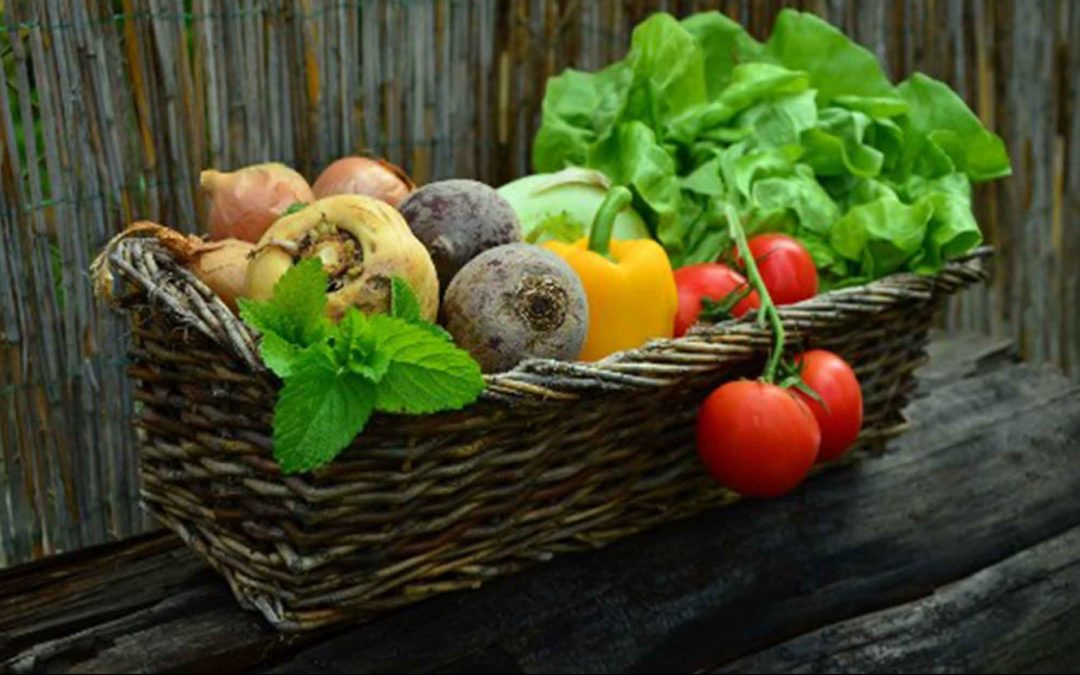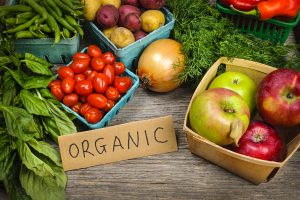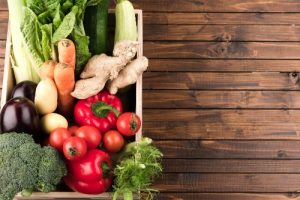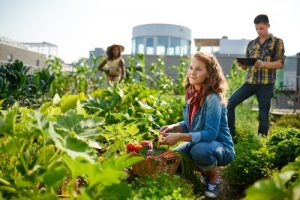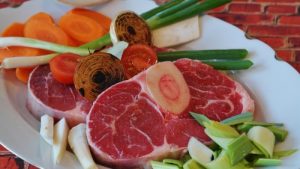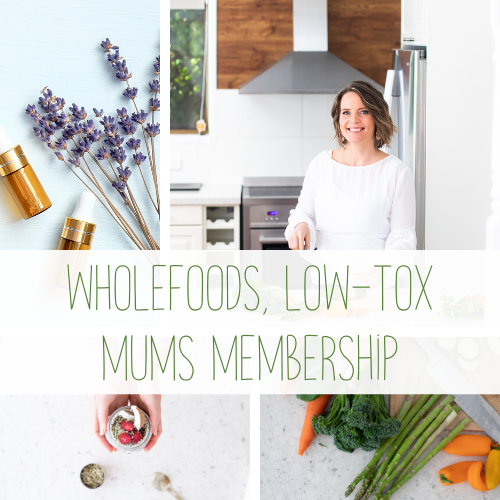Since WWII there have been over 70,000 new chemicals introduced into circulation in our cosmetics, body care, cleaning products, packaging materials, food additives, herbicides, pesticides and more. Due to the relaxed regulations around chemicals when it comes to food production and non-organic farming, you may find yourself consuming up to 20+ toxic chemicals, some hormone disrupting, every time you have a ‘healthy’ salad.
Would you like some Round Up (Glyphosate) salad dressing with your kale and micro-greens? Farmers are actually allowed to spray their crops – yes the ones we consume – with Glyphosate, to speed up the drying time for quicker harvest.
Chemicals like Glyphosate are wreaking havoc on our bodies, contributing to chronic gut problems, autoimmune conditions and health issues if we don’t opt for the organic fruit and vegetable alternatives. I shudder to think of the volume of pesticides and herbicides I have consumed in the past while thinking I was eating healthy fruit and vegetables.
Let’s be real though, eating organic can push your budget to the limits, leaving you with no room to do much else in life, other than eat. As much as I love food, I still like to other stuff, some of which costs money!
So, over the last couple of years I’ve been slowly learning and adapting to help us stick to a 90% organic diet, without going absolutely broke. So here’s my tips:
Fruit and Vegetables

Image courtesy of Nourished Life
Storage is important
Keep your produce fresh so you’re not throwing valuable food out in the rubbish every week. Try to avoid keeping your fresh organic food in plastic as it defeats the purpose of buying organic, as you’ll be consuming micro plastics along with your organic celery and cucumbers.
Organic cotton waxed wraps and swags are a great way to keep your produce crisp and last the week until your next shop.
Farmers Markets:
It used to be so great (and cheap) going to the markets and getting organic or at least spray free fruit and veg, but it seems to be getting more and more expensive as it’s becoming more popular, because people are making better food choices. There’s a couple of things you can do to keep your costs down.
If you have the time, when you arrive at the market, do a lap of all the stalls and compare prices, then do your second lap and collect all the better priced produce. After a few weeks you’ll know your better priced stalls and you’ll be in and out in no time.
Another trick is to turn up to the market just before closing time. You may not always get exactly what fruit and veg you want, but they are often discounted down to sometimes as low as half price!
Farm boxes:
There’s quite a few companies around these days that deliver seasonal organic produce to your door. You can usually get a standard box and it’s a lovely surprise, or you can tailor them to exactly what you want. There is sometimes a small delivery fee but if you spend as much money on organic veggies as we do each week, the delivery fee is often wavered.
Join a Cooperative
This is what our family is involved in right now thanks to some amazing community minded people that have set up our local cooperative. This means that we order produce at wholesale prices.
We all have a task, be it admin, fruit and veg weighing and sorting, managing bulk dry goods orders and even organic, low tox cleaning and beauty product orders.
We all enter our order in to a spreadsheet once a week and at the end of the week, we all meet and play our parts to sort and distribute our organic wholesale fruit, vegetables, meat, dry goods and personal care and cleaning/laundry products. This has been the game changer for us financially!!!
Ask around your community and see if there is one that you can join. Or, if you have the means and believe you can gather enough troops (shouldn’t be too difficult), you can set up your own co-op and order wholesale organic produce and products.
Grow your own
You can start with a few herbs on your deck or put in a raised veggie garden. There’s plenty of info out there to help you in your veggie patch, if you’re a newbie to gardening. A great page that I follow is called Family Garden Life. They have amazing groups, one of which is Family Garden Life – Our Food Garden. This group offers advice and tips and plenty of inspiration. Be sure to check it out.
Join a community garden
Our local community garden is amazing. The kids love playing there and there’s even a clay pizza oven for social gatherings.
For a small yearly fee you can manage your own plot and grow your own beautiful organic food. There is sometimes a wait on getting your own garden plot and you will have to go to the occasional working bee. The joy and relationships to be enjoyed at your Community garden is priceless.
Supermarket
A lot of the time, organic food from the major supermarkets is scary expensive and sits on the shelves for a long time because of this, BUT……………………………..Some supermarkets sell organic frozen veg.
As the week draws closer to co-op day, my veggie supply gets pretty low. I use a bag of mixed frozen veggies in a casserole or curry to get me through til our next pick-up. They are really cheap and there’s no chopping! Just be careful to check where they are from.
It’s also way more economical to purchase frozen organic berries. Especially since berries are on The Dirty Dozen list.
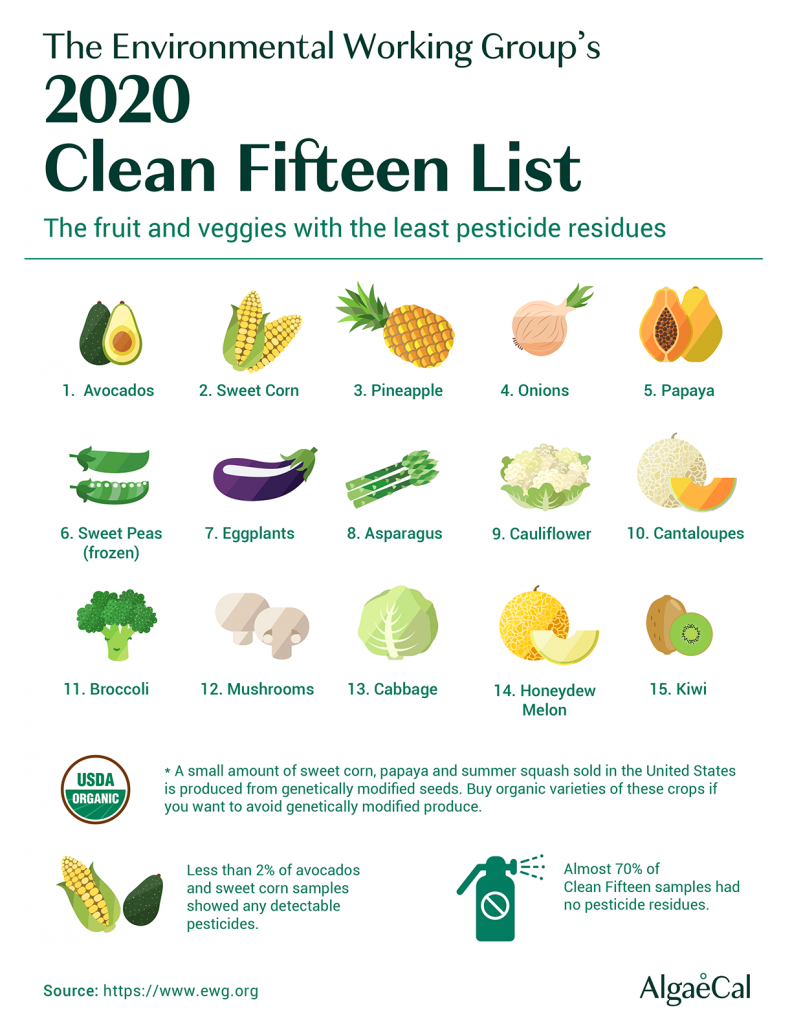
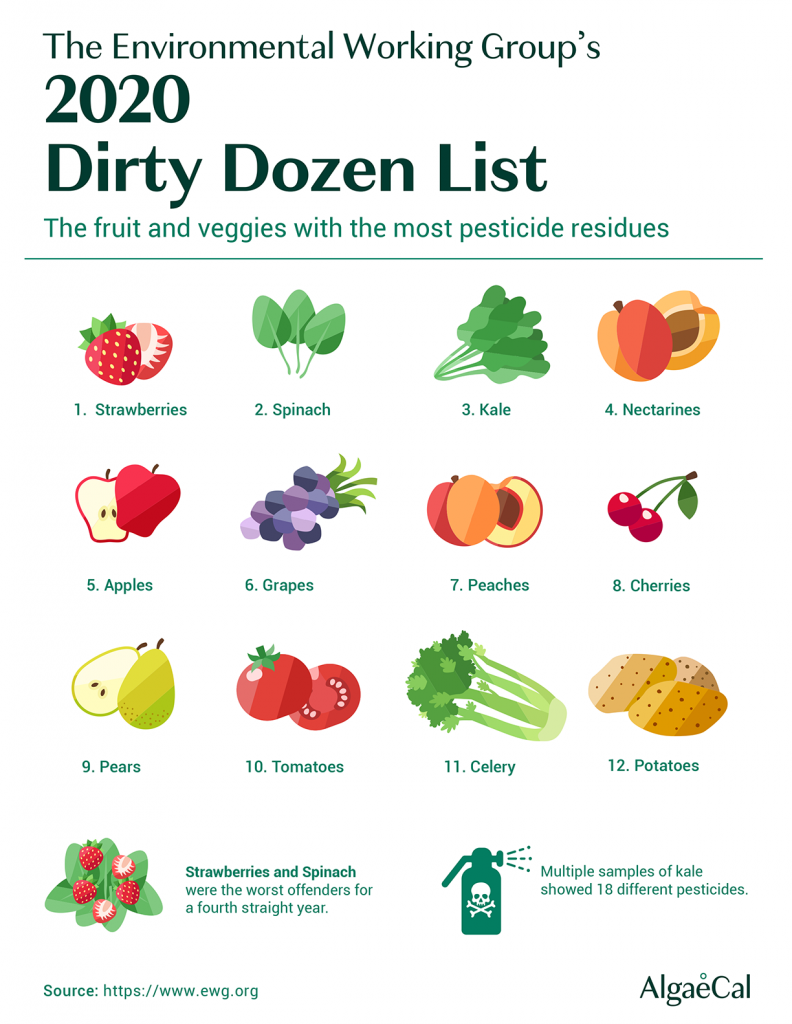
Images by AlgaeCal – Thanks!
The Dirty Dozen & Clean Fifteen
Each year, testing is carried out on fruit and veg to determine levels of pesticides and chemicals present. Sometimes as many as 20 different toxic chemicals are found on fresh produce. From this, a list of ‘The dirty dozen’ and ‘The clean fifteen’ is published to help us navigate choosing our safest produce to consume if and when we can’t choose organic. The idea is to avoid any non-organic food on the dirty dozen list while choosing regular produce on the clean fifteen list if organic is not an option for whatever reason.
Meat
Now meat is something that we often can’t eat organic in our household due to the $$$$. While the Co-op is great, we can only get some cuts of organic beef at the moment.
We eat organic chicken and free range, antibiotic and hormone free nitrate free bacon from an organic butcher out of town, that delivers once a week. The rest we get from a health conscious butcher in town. He has had his own gut healing journey so he totally gets it. His meat is all grass fed, free range meat.
It’s really important to purchase your meat from a butcher that you trust. Always try and purchase pastured animals that eat their natural diet, not GMO corn!!! Ask your butcher, where they are from, what they are fed etc. If they don’t know or sound a bit dodgy, head for the hills.
You can also save money by eating nose to tail. These cuts of meat are usually cheaper and fit well in to a healthy, healing diet as they are packed with goodness.
I hope you can find some great tips in here to save you some pennies.
Please leave your tips on how you save money while eating organic for all of us to see.
Looking to lead a more low-tox life and switch to a wholefoods diet? Need some help, support and inspo along the way?
Check out our low-cost membership for amazing Mumma’s that are on a mission to reduce their families toxic load and fuel their families with wholesome wholefoods minus the overwhelm. Wanna know more?

